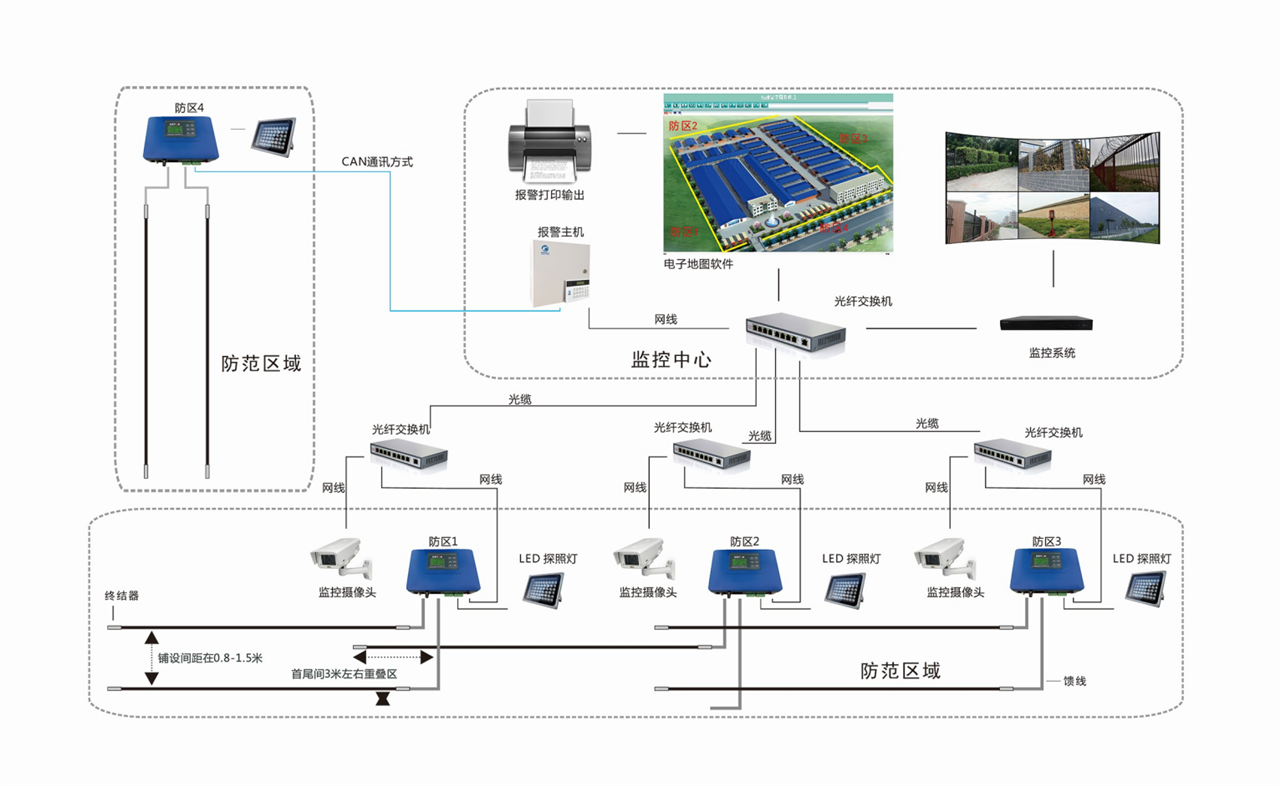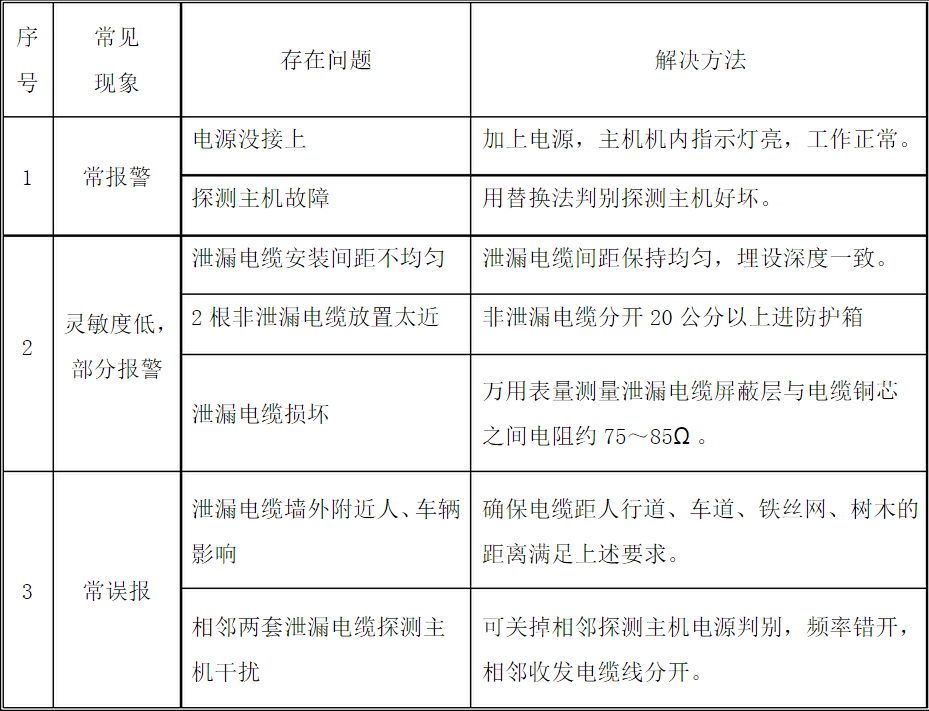As a perimeter security product, leaking cable detectors are also widely used in life. So what should we pay attention to when installing, how can we make the leaking cable work better? Start with the requirements when installing a leaky cable detector!

The first is the requirement for the length of the perimeter defense zone.
The leakage zone of the passenger-European security cable detector needs to be installed more than 100m. Cables smaller than 100m can be customized, but the main unit does not need to be changed.
The front end of the leaky cable detector consists of a 5m long non-leakage cable and a leaky cable. The leak is freely cut according to the length of the zone. The standard factory length is 200m.
Second is the requirement for "installation environment"
Leakage cable detector main unit should be placed in a waterproof protection box to avoid high frequency interference sources near the main unit and power line. And the adjacent zones should use hosts of different frequencies, and the corresponding installation environment is also strictly controlled.
1, the host installation environment temperature: -10 ° C ~ +50 ° C
2, distance from the sidewalk: more than 2m, more than 5M away from the carriageway
3. Distance from trees: Trees with a diameter of 20cm or more are kept above 50cm
4, from the metal fence or well cover: 50cm or more
5, distance from the river: more than 1m
These conditions are intended to prevent pedestrians and other factors from affecting the detector. If the protected area does not meet the above installation conditions, it is not recommended to install a leaky cable detector. Unless some places can be disarmed during work hours, the installation guards during the off-duty period.
Finally, the requirements for "cable laying".
Cable installation spacing
0.6~~1.2 meters (recommended 0.8 meters)
Cable burying depth
Cement floor 3cm~8cm (recommended 5cm)
Loose soil: 5cm~-10cm
When the cable is buried through trees, shovel, etc., the depth of burial should be appropriate;
When the cable turns, the flat root line turns in parallel, the cable is not hard folded, and the bending radius is not less than 20cm;
The two non-leakage cables should not be crossed and closely attached to each other. The excess should be cut off, re-installed, and not coiled in a waterproof box or underground line.

When multiple sets of leaky cables are used, the standard usage is that two adjacent sets of leaking cables are connected end to end. Due to the transition zone at the beginning of the leaking cable, in order to ensure reliable detection of the adjacent two detector joints, it is recommended that the operating frequencies of the two sets of ends are not the same, and the same frequency cannot overlap (Note: Before installation, pay attention to the leaky cable host) A, B two frequencies)
The leaked cable after installation may have some minor problems during the test. At this time, some common fault solutions are needed. The overall summary is as follows:

Liquid Epoxy Resin,Sinopec Epoxy Resin Cyd-128,Sinopec Epoxy Resin Cyd-127,Liquid Resin Epoxy
Saint Petrochemicals Limited , https://www.saintpec.com